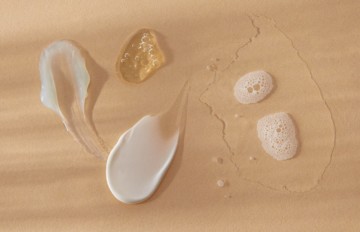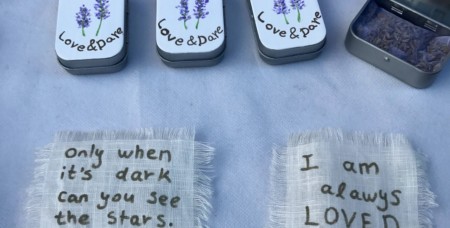
The Meeting of the Divinities: The Centaur Chiron and the god of medicine, Asclepius
Nadège Quinssac, is a teacher and passionate about Mythology and Astrology. We’ll meet with her each month to learn more about how Antiquity and Modernity are closely linked. We’ll discover how ancient Culture is linked to our daily and contemporary life, through Mythology by intertwining them both to the Wheel of the Priestess and its Archetypes (See Alexandra Fryda Marty‘s articles) and Astrology.
The sign of Virgo has coloured this late August and will mark much of September, in harmony with the Healer Archetype, which Alexandra Fryda Marty has talked about in her article.
To weave Mythology and Archetype of the Healer, we could have been talking about the Witch-Magicians who have a detailed knowledge of medicinal plants and who have healing functions in ancient society. But the Wheel of the Priestress will lead us to these women quite naturally in the darker time of the year, guided by the Great Goddess Hecate.
For this month of September and in keeping with the Healer Archetype, we will be talking about the famous Healing Centaur, Chiron, linked to the Greek god of medicine, Asclepius, which will be discussed in this article.
But before we meet Chiron, let’s look at the Centaurs. Who are these half-human, half-horse beings that both challenge and frighten…?
The Centaurs were perceived by the Greeks as wild men, personifying the forces of the mountains and the forest: beings carved out of the raw nature, rough hunters. They are depicted with a human bust attached to a horse’s body, with weapons that are tree trunks and pieces of rock, and despite this ruggedness, despite this roughness linked to their wild nature, they are said to have light and tireless feet that allow them to walk along the paths and tracks of this somewhat wild Nature, with its sometimes hostile terrain, in the mountains or in the forest.
The Centaurs are said to be the result of the union of Ixion, who wanted to seduce Hera, the wife of Zeus, but Zeus, fiercely jealous, sent Nephele, the Cloud, to him in the guise of Hera, and they joined on Mount Pelion, in Thessaly, in Northern Greece, a region reputed to be cold and mountainous.
They are considered barbaric and wild, representing animalistic desires. To illustrate this reputation, a well-known mythological episode tells that Centaurs, invited to the wedding of their neighbours, the Lapiths, to celebrate the marriage of the king, Pirithous, and Hippodamia, tried to kidnap the young bride and other women (this episode was carved on the metopes, the marble vignettes, at the top of the Parthenon temple in Athens but also at the top of the temple of Zeus, in Olympia). They were cast out and rejected as a result of this act of betrayal.

The most famous of the Centaurs is Chiron, who takes on the beneficial and positive aspect of this hybrid race of men and horses. Chiron is called the wounded Centaur and for good reason…
His birth was already marked by an atmosphere of profound violence, and he thus experienced two deep initial wounds: those of abandonment and rejection.
He was born of Philyra, the niece of Cronos, and of Cronos himself, who possessed her by incestuous rape. Married to Rhea, and surprised by her, he transforms himself into a stallion and flees, thus abandoning Philyra to her pain and sorrow. Chiron will be abandoned by Cronos who will never acknowledge his paternity.
When he is born, Philyra notices the creature she has given birth to: half-man, half-horse and cannot bear the sight of this monster. She begs the gods as hard as she can to be transformed so that she no longer has to endure the abandonment of this son whom she cannot bring herself to accept or love. She will be transformed into a lime tree. And it is said that Chiron will be nourished by the sap of the lime tree and that the rustling of its leaves transmitted messages to the young Centaur, as if, despite everything, Philyra wanted to watch over the son she had abandoned.
Chiron is taken in on Mount Pelion in Thessaly by the god Apollo, associated with the Sun, who adopts him and teaches him all his knowledge, linked to culture and civilisation: philosophy, logic, prophecy, the art of shooting with a bow and playing the lyre, poetry, medicine and healing.
Artemis, Apollo’s twin sister, associated with the Moon, living in the mountains and forests, teaches him the art of hunting, of the wild and primitive life, she passes on to him all her knowledge and respect for Nature, including the science of plants and the properties of medicinal plants, and she teaches him the properties and influences of the celestial bodies.
And in his turn, in his benevolence and wisdom, it is quite naturally that Chiron will teach to transmit. He overcomes his solitude and his discontent by rising above through knowledge, he will surmount his two initial wounds by learning from them and it is with patience and passion that he passes on his wisdom and experience, linked to what he had experienced and what he had been able to reinvent of himself, to the heroes and famous figures of Greek antiquity; among them are Ulysses, Theseus who fights the Minotaur, Jason, the hero of the Golden Fleece, the twins Castor and Pollux, Heracles, and a famous hero of the Trojan War, Achilles, for whom he will truly become a father figure.
He is their tutor, their instructor, a good teacher who knows how to pass on what he has learned.
Chiron is also oriented towards relationships with others: he will advise and guide Achilles, but also his friend Peleus, to whom he gives precious advice about patience in seducing the nymph Tethys, about respecting the rhythm of Tethys in turning towards Peleus, about accepting the path to reach Tethys.

Finally, he taught the future god of medicine, Asclepius, or Aesculapius: Chiron passed on his patiently acquired knowledge of the world of animals, that of plants and their therapeutic virtues, the particularities of healing through music, but also the knowledge of the celestial bodies to go so far as to divert, or even prevent, the influences that are harmful to humanity.
Humanist, philanthropist, protector and teacher, he brings together in himself the evolution of the Centaur: from Ixion and the harmful Centaurs to him, it is like going from the barbarian to the civilized.
And Chiron is not a Centaur like the others, as we have seen, but he has this part of spirituality strongly anchored in him because he is associated with ancient practices that consisted in contacting the gods: patients came en masse to consult him in his healing temple, located in a cave at the foot of Mount Pelion, where they slept and visualised in their dreams their illness and the way to cure it. He also practised hypnosis so that the patient could regain possession of, and recover, all his knowledge from his previous lives.
He is really the one who guides, he is the one who calls the higher spirits and the gods as if to connect, like a bridge, the base and the top, the earth and the sky.
Finally, his very name Chiron is linked to the ‘hand’, which in Greek is called [cheiros], the hand at the service of the brain, the hand that heals, which gave rise to surgery, chiropractic as well as palmistry.
Unwillingly wounded by Heracles, he does not die and is able to heal his wound with the healing plant of the common centaury. Since this mythological episode, the name Centaurea has been attributed to the family of plants with numerous virtues.
Despite the terrible wound inflicted by the arrow poisoned with the blood of the Hydra of Lerna, which the hero Heracles had defeated, Chiron did not die, but his suffering was unbearable to the point of asking for the sacrifice of his life so that Prometheus could benefit from his immortality.
Zeus agrees to his request, as he may well grant Chiron’s request, tired of having fought all his life, and he transports him to the sky, inscribing him in the ancient celestial uranography, in the constellation of the Centaur.

There is an asteroid called Chiron, discovered by an American astronomer on November 1, 1977. He noted that this asteroid crosses the orbit of Saturn, or Cronus, to approach that of Jupiter, Zeus, and then crosses it again to head towards that of Uranus: this path deviates from the regularity of the other planets and thus gives it a marginalized, solitary appearance, which could only resemble the unusual path and solitude of Chiron, the beneficent centaur who had to find his place among the gods. The asteroid which crosses the planets is likened to the guide and ferryman that Chiron was.
Closely related to Chiron is Asclepius, the Greek god of medicine, later called Aesculapius by the Romans. Asclepius is the son of the god Apollo and the nymph Coronis. The god, having sensed the infidelity of the woman he loved, commissioned a white crow, some would say a white raven, to spy on Coronis in his absence.
The young woman was having a relationship with a mortal named Ischys and the crow, or raven, confirmed Apollo’s doubts: mad with anger and pierced with pain, he changed the bird’s colour to black forever and it is said that it is since this episode that crows and ravens are black and have long been considered to be harbingers of bad news or impending death.
Apollo asks his sister Artemis to shoot the unfaithful Coronis with arrows, but at the last moment, he changes his mind and decides to save the unborn child by tearing it from its mother’s womb. This is how Asclepius was saved. Apollo entrusts him to Chiron, who takes care of him, raises him and becomes his tutor.
Several versions of Asclepius’ healing powers are known: a mythographer named Apollonius writes that it was the goddess Athena who offered Asclepius the blood of the Gorgon to bring the dead back to life; another writer named Hygin relates that being in the house of a seriously ill man, Asclepius saw a snake come to him and coil itself around his staff, he killed it, but he saw another one approaching, a herb in its mouth, which, by this herb, resurrected the slain snake.

It is said that the caduceus comes from this episode, as well as the positive and therapeutic symbolism of the snake and the knowledge of the herb that allowed Asclepius to raise the dead. The value attributed by the Ancients to the snake is explained by the fact that it moults, and, through this change of skin, it symbolises eternal youth, it was considered to regenerate itself through contact with the earth and it is the one who knows all its depths and mysteries.
With his wife Epioné, which means “the soothing one”, Asclepius had sons and daughters, the most famous of whom are Hygieia and Panacea: Hygieia, which means “health” and who rules over “hygiene” (which etymologically means “who rules over the practices that ensure health”) and here a connection is made with one of the characteristics of the Healer in Virgo, cleanliness.
Finally, a lexical heritage: today in Greece, we toast by saying [hyguia sou] : “to your health”.
Panacea is the one, as her name indicates, who gives men all the remedies through plants. And this name has become a common name “panacea” which designates a remedy for all ills. Moreover, when we say, this work is not a panacea, we are in a proverbial expression inherited from our dear ancient Greece.
Asclepius also had a daughter, Meditrina the Healer, who gave medicine and physician, but about whom very little information has come down to us, overshadowed by her sisters Hygeia and Panacea.
Hygieia’s attribute was a cup that allowed her to make healing mixtures, to collect the venom of snakes, like a cauldron in which magic potions were brewed… and this cup around which a snake wraps itself became the symbol of the Order of Pharmacists.
As a god of medicine, Asclepius was worshipped in the forests, near a spring reputed to be beneficial and at high altitude to breathe pure air.
The city of Epidaurus dedicated a temple and a theatre to him for the therapeutic virtues associated with the theatre, which in the minds of the Ancients, through the process of catharsis, made it possible to purify oneself of one’s bad passions and, through the performance, to mirror what was played on stage with what one might experience in one’s own life.

The priest-physicians would lay the patients who came to the temple overnight under an incubation portico, where Asclepius would appear to them in a dream in the form of a snake and indicate the remedies that would cure them. These remedies were inscribed by the priests on tablets hanging in the temple: thus, oniromancy, divination by dreams, was born.
The healed patients thanked the god and offered ex-voto in the form of various objects or inscriptions on plaques expressing their gratitude to the god.
Aesculapius, which is the Latin name of Asclepius, has become the name of a complex of essential oils in phytotherapy to facilitate breathing during the first chill of autumn and winter.
We can see how much Chiron and Asclepius left behind them magical practices, lexical traces of words created from them, and very powerful symbols still in use today.
We realise to what extent Antiquity passed on fabulous legacies and crystallised so much knowledge, how sensitive it was also to this precious balance between earthly/celestial and human/divine, how much room it left for listening to Nature but also to what we cannot always understand or formulate in a rational way, and which nevertheless brings us, lifts us up and leads us to the ways of Healing.




















